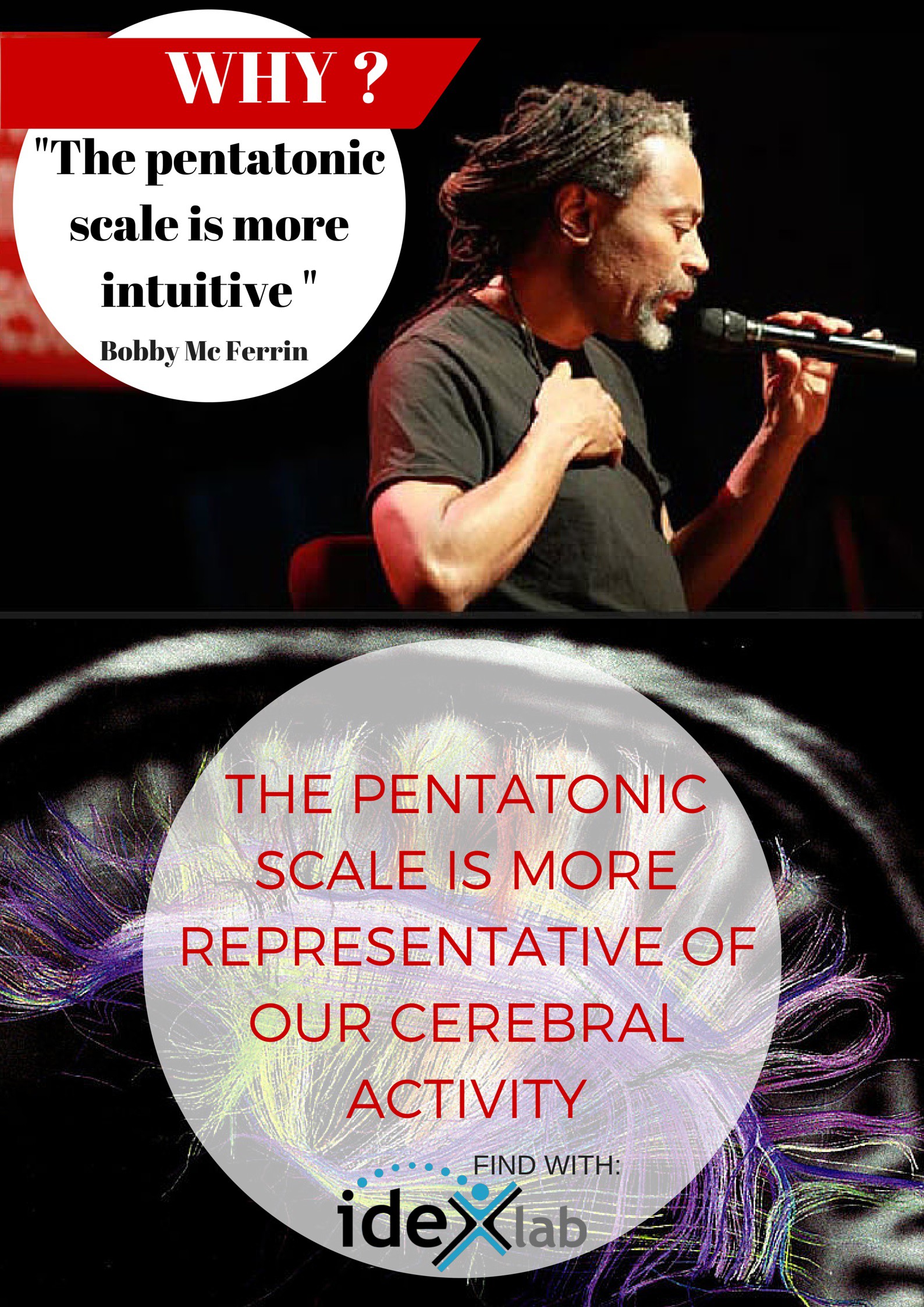An Illustration of the link between music and science
Science and music learning – I never tire of this video of Bobby McFerrin during his time at TEDx.
Science and music learning taught by Bobby McFerrin
In less than three minutes, we see the singer teaching, with humor, hundreds of people to sing together a complex piece of music … The video is going to allow us to illustrate an original case of link between music and science
The means used by Bobby McFerrin to teach the music are very reduced. He does not speak to the crowd, nor uses words. He just sings and moves on the stage and the appropriation of the music is immediate. A first jump puts the song in movement; a side jump allows people to sing a tone above; a jump on the other side to sing a tone below. Not content with communicating the pleasure to make some music together to his public, Bobby McFerrin makes it with humor and kindness.
The absence of words in his teaching is one of the reasons explaining that this music learning works with crowds worldwide. Another reason is probably due to the fact that the music scale used by Bobby McFerrin to get the crowd to sing along is an almost universal scale of five notes called the pentatonic scale. This scale is indeed used, with nuances, in numerous oriental and western music cultures.
But Bobby McFerrin is not the only one to be interested in the pentatonic scale. The applications of that exceed music. Science is also interested in it for surprising applications. It is what we discovered by using the ideXlab search engine. The search engine quickly allows to get an idea of the state of the knowledge – what science tells us – in highly varied fields, including those related with music, as for example the last discoveries concerning the pentatonic scales.
Let us see an example of what science tells us
A team of neuroscientists at the University of Chengdu and Shanghai Academy of Sciences in China “listen” to the activity of the brain by translating it in the form of music. To do it, they measure the electroencephalogram (EEG) and translate it into musical notes among which the height, the duration and the intensity are calculated by a mathematical processing of the EEG. In recent works, they applied this music production method separately to the right hemisphere and to the left hemisphere of the brain, and then they stacked the melodic lines of both hemispheres.
They used successively a heptatonic scale (scale with 7 tones, the most used in western music: do re mi fa sol la si) and a pentatonic sale. Their results demonstrate, by applying this technique to sleeping patients, that the pentatonic scale leads to better differentiation of sleep cycle phases. It also produces music – generated brain waves -which is more harmonious than the heptatonic scale! They don’t comment on whether science so demonstrates that the pentatonic scale is more harmonious or universal than the heptatonic one.
Of course, this work does not explain the effectiveness of learning proposed by Bobby McFerrin. But they illustrate the growing links between music and science, be they cognitive, medical, physical, etc.
One wonders who benefits from these links: artistic practice, by injection of new knowledge as we have seen in this example about the music, or rather the science which is enriched by poetry and humanity?






